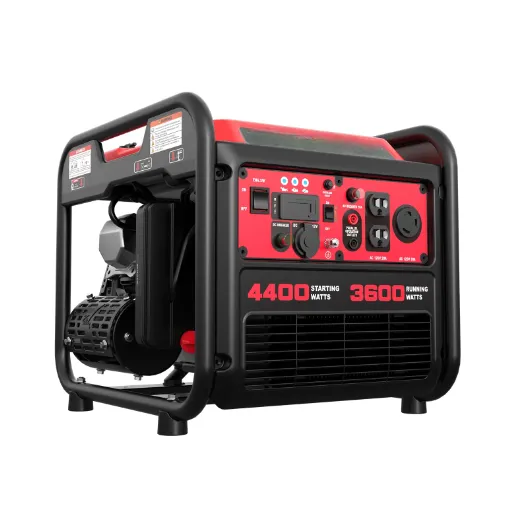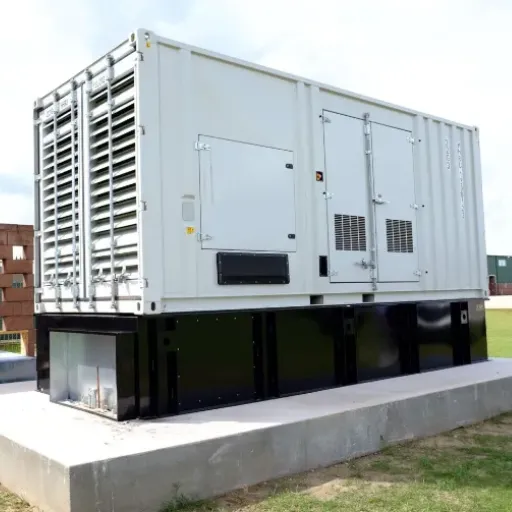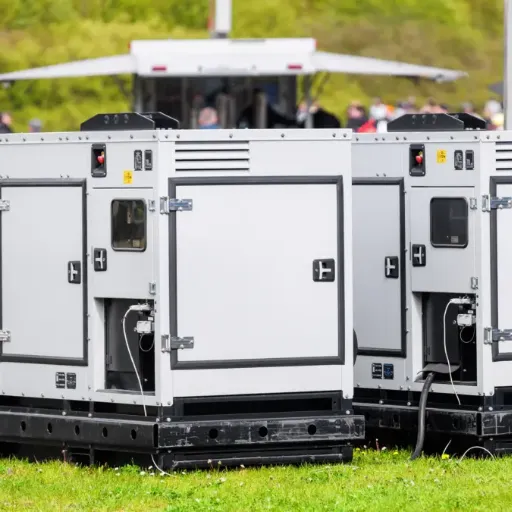When a power outage strikes, the comfort, convenience, and security of your home can quickly be disrupted. Choosing the right generator size is crucial to ensuring an uninterrupted power supply when it matters most. That’s where our Ultimate Home Generator Size Calculator comes in. This guide is designed to walk you through the essential factors needed to calculate the ideal generator capacity for your home, from understanding your power requirements to accounting for critical appliances. Whether you want a backup solution for emergencies or a full-scale system to power your home seamlessly, we’ll help you make an informed and confident choice.
How Do I Determine What Size Generator I Need?
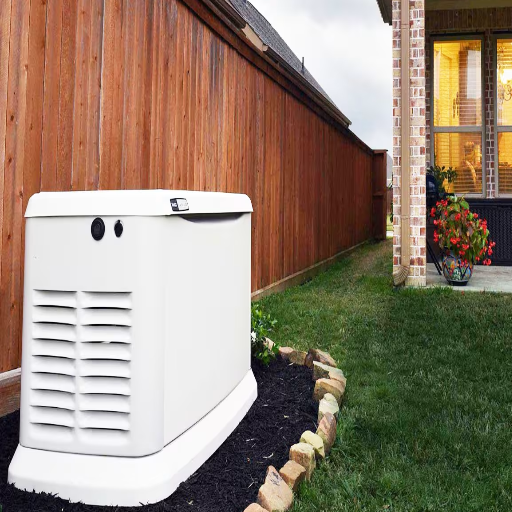
Understanding Your Home’s Power Requirements
Calculating the correct generator size starts with understanding the power requirements of your home. You need to determine the wattage required to run your generators, both essential and non-essential appliances during an outage. To do this, first, make a list of all the appliances that you wish to power with your generator. The list includes critical appliances, such as refrigerators, HVAC Systems, and sump pumps, or smaller electronics like lights, televisions, and phone chargers.
The majority of appliances can be classified into two categories, surge power and running wattage, with each having its distinct starting surge and running wattage. These values can be found on labels located on the device, or they can be found in the manufacturer’s specifications. An appliance example is a refrigerator, this may require an initial surge wattage of 1200 watts to start its compressor. It is worth noting that during the running state, a refrigerator may only require 200-400 watts. HVAC Systems and other high-power devices usually demand higher wattage, so the correct calculations become imperative; else, you risk overloading the generator.
After identifying all of the appliances, total the wattage demand by adding the running wattage and surge wattage for each appliance. Often for reliability reasons, add another buffer—generally a 15–25% margin over your total calculated wattage is recommended in order to account for unexpected fluctuations or additional loads on the generator. Taking these steps will ensure sustained and dependable performance through extended periods of outages, offering backup power designed according to your precise requirements.
Calculating Total Wattage Needs for Essential Appliances
To find out the total wattage requirements for your essential appliances, make a detailed outage list of items you need to power. Start by turning on every appliance and recording its “running wattage.” This is the amount of energy it uses during normal operation. It’s also crucial to measure its “surge wattage,” which is the power in excess power needed to start the appliance. Auditioning surging mechanisms from shape forming machinery surrenders makers prerogative unattached to equipment identification tags or manuals where powering details could be captured.
To calculate the total running wattage, ascertain the sum of running wattages from all appliances. This gives the lowest power requirement. Next, add up all surge wattages as well and choose the appliance with maximum surge wattage added onto the running sum. The generator is guaranteed not to lift the strain during equipment turning on surges and avoid overloads since this method conserves peak weight projections.
Say the refrigerator requires running and surge wattage of 700 and 2200 respectively, while lights and fan set their requirements at 100 and 120 running watts yielding total running equal to 920. Then the total addition yields surge boosting figures to settle at 3120.
The recommendation of adding 15-25% safety margins therein lies guarantee of serving the household’s core energy utilities without drawing excess burdens from default away from the generator’s capacity with assurance. This helps to prevent damage to the appliances, the generator and ensures that they will function effectively for a long period.
Factors to Consider When Selecting Generator Size
- Starting and Running Wattage: All of the generator’s appliances must have specific wattages – both starting and running. Starting wattage is required as a boost of power during the start of a device, for instance, setting a comfrigerator, air conditioning unit, or pump into motion. Starting wattage is always much higher than running wattage. Because of the need for equilibrium, both figures about all devices critical to a given household need to be summed meticulously.
- Total Power Requirements: Essentials in this context range from heating systems, lights, communications devices, and in certain extreme situations, even medical ones. Adding a margin of at least 15%-25% allows safety by ensuring the generator can handle spikes.
- Generator Fuel Type and Efficiency: A diversity of fuel options, such as gasoline, diesel, propane, and natural gas, affect the performance and adaptability of different generators. Propane generators may be cleaner, but diesel generators have a reputation for being more efficient and longer-lasting. Furthermore, your area’s fuel availability and cost may impact operational logistics during extended outages.
- Environmental Factors: Performance can be impacted by surrounding environmental factors. Efficiency is lowered at high altitudes and extreme temperatures because those conditions affect combustion within the engine. This type of generator might require additional fuel derating to operate at these conditions, so principles specific to your generator should be considered to avoid any performance setbacks.
- Noise Levels and Regulations: If you live in residential areas or regions with tight noise limitations, noise specifications become more critical. A lower operating decibel output is preferable. You are encouraged to check local construction policy to ensure that all building codes and derived rules dealing with generator placement are followed.
- Portability vs. Permanence: Determine whether you require a portable or stand by generator. Portable generators are small in size and flexible for short-term use when compared to standby that are permanently installed and turn on automatically when there’s a power outage. Typically, standby models have greater power outputs and meet the long-term energy requirements of a household better than portables.
- Transfer Switch Suitability: The generator must include circuit breakers in order for you to connect a generator to your house’s electrical wiring safely. Analyze if your generator works with manual or automatic transfer switches. It is automatically switched on and off hence the term automatic, which is more advantageous because it starts the generator when it senses a power outage.
Considering these factors collectively will enable you to select a generator suitable not only for your household’s energy consumption but also for the technical and environmental limitations in this case. Evaluation and planning will help us optimize the reliability and efficiency of our power system amid a disruption.
What’s the Difference Between Running Watts and Starting Watts?
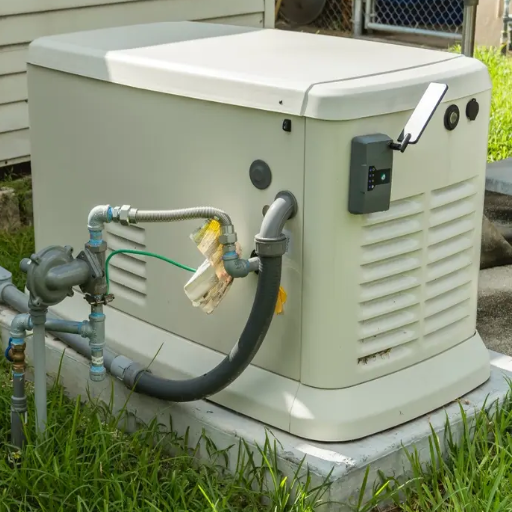
Calculating Running Wattage for Continuous Operation
Running wattage, or rated wattage, is the value of power an electric device requires while it is active. This value is important when determining the baseline load requirements of your generator. Running wattage is also helpful in knowing if your generator can support the total wattage draw of all devices turning on and operating at the same time. For example, some appliances such as refrigerators, lights, and air conditioners consume operational power and require their running wattage to be calculated in unison.
To figure out the running wattage for your setup, begin calculating the power requirements of each device. The sum of the wattage of all devices in use is known as the total running wattage requirement. For example, if a refrigerator uses 700 watts and a light fixture uses 100 watts, the total running wattage is 800 watts.
Adjusting for efficiency sinks and load changes is equally important. Generators perform optimally when running at 75-80% of their capacity. Beyond this threshold, inefficiency and damage to the generator become likely. Hence, after calculating the total running wattage, it makes sense to choose a generator that allows some flexibility in power consumption fluctuations to reduce the risk of generator overloading during prolonged operations.
Understanding Starting Watts for Electrical Appliances
The starting watts or surge watts are the additional electrical power needed by an appliance during its start-up phase. This power demand is crucial for motor or compressor-based units like refrigerators, air conditioners, and even power tools, as these appliances tend to draw current spikes when switched on. Although these surges only last a few seconds, they can surpass the running wattage of that specific appliance by a considerable amount.
Taking a refrigerator as an example, it runs at 700 watts, but during the initial cycle, it consumes close to 1,200 surge watts. Same goes for an average central air conditioning unit; it runs at around 3,000 watts but surpasses 4,500 starting watts. When selecting generators or equipping backup power systems, understanding power disbalance is important as having insufficient capacity may result in voltage drop or instability in the system.
To manage starting watts in a power system, it is crucial to determine the surge power requirements from appliance specification sheets or the manufacturer’s instructions. Encompassing the staring wattage of appliances that can potentially begin operation simultaneously guarantees that the generator or power source is capable of peak demand without performance or safety compromising. Effective planning ensures that sensitive devices are not under-powered while system overloading does not occur, especially during high-demand events or emergencies.
How Load Management Affects Generator Size Selection
An adequate assessment of size for any offered generator application involves the concept of load management mira Calry. The process begins with an estimate of the total running wattage as well as the starting (surge) wattage of each subsystem or component. A factor that is often overlooked but critical when sizing a generator is the starting wattage, which could be more than an order of magnitude greater than the running wattage. Thus, undersized generators, which are the result of overlooked assumptions, tend to intuitively load damage or fail to operate when under surge power, during the peak of surge.
Furthermore, the approach also allows addressing load prioritization. Through the identification and prior categorization of critical and non-critical loads, users become able to apply a more analytical phased load approach where primary systems are powered as a priority. Advanced modern load management devices like automic transfer switches (ATS) fitted with load shedding possibilities are able to considerably enhance the operation of generators through intelligent categorization of power during periods of vast utilization.
Forcing a generator oncale operating on the border limit or steadily meets constant running below full exertion can relatively slow down the pace or lifespan. Best practice is whereby there shall be generators whose peak load expected is relatively speaking is around 20 to 25 percent above reserved, hundred percent shall allocate power safefully and reliably while increasing cost effectiveness.
Should I Choose a Portable or Standby Generator for My Home?
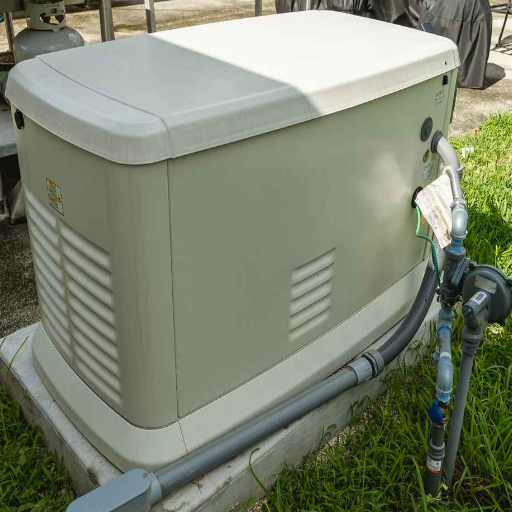
Comparing Portable vs. Home Standby Generator Solutions
In evaluating the best fit for your home, whether it is a standalone unit or a portable generator, crucial considerations such as power capacity, installation requirements, fuel type, and maintenance demands must be thoroughly assessed first. For short-term or emergencies, portable generators offer a reasonable cost solution. With a power output of about 2000 to 10,000 watts, they are capable of supplying most essentials and important devices. Nonetheless, they offer low output, requiring a manual start during outages as well as engine starts and cable connections. Moreover, portable propane or gasoline-powered generators need robust, safe storage and constant refueling.
Standby unit generators are designed to manage a higher power load than their portable counterparts. Their output generally ranges from 10000 to 24000 watts, which qualifies them to provide power to a whole house. Beyond that, standby generators have fuel type flexibility; they can be directly connected to a home’s electrical panel to a natural gas or propane fuel source, giving them ease of access and hassle-free operation. This unit’s primary setback is that it comes with higher installation costs and needs professional installation alongside regular maintenance. However, the long-term convenience these systems provide with standby generators greatly level out the upfront expenses through reliability.
In the end, the comparison of portable and standby generators must consider your power needs, financial limits, and intended activities. Mobile homeowners with limited budgets may prefer portable options, whereas consumers seeking full-coverage functionality and automated operation often select standby systems because of their superior output capabilities.
Natural Gas and Propane Options for Backup Power
In terms of efficiency and dependability, natural gas and propane stand as reliable fuels for standby generators. Natural gas is received through underground pipelines, making it possible to eliminate storage requirements and maintain consistent power supply during extensive outages. With propane, the off-site storage in specific tanks makes it possible for remote locations or areas without access to natural gas infrastructure.
Both natural gas and propane are optimal fuels from an emissions standpoint because they are considered cleaner substitutes for gasoline or diesel. For instance, propane usually releases approximately 12% less CO2 emissions for each energy unit, and due to its simpler molecular structure, natural gas is cleaner from burning fuel. This gives ample consideration into mind environmentally mindful clients to choose both options.
Choosing between the two fuels requires examining the costs. Due to the centralized distribution and stable pricing, natural gas is usually found to be more affordable to access as time goes by. Though propane tends to be more costly by the gallon, long-term storage and portability gives propane the edge. Both fuel types are compatible with advanced generator models featuring automatic start capabilities and high-efficiency ratings, ensuring that power can be restored within seconds of an outage.
The choice of fuel type for any equipment depends predominantly on the individual’s energy requirements, location, and financial considerations. For example, natural gas might be the most economical option for city-dwelling householders with interfacing gas lines, while propane is more favored among rural users because of its self-sufficiency from outside systems. No matter the selection made, innovation in generator technology improves system efficiency performance with these fuels and maintains the required dependability and sustainability ideal for essential backup power applications.
Installation Considerations for Different Generator Types
The proper installation of generators is critical to their performance, safety, adherence to regulations, and optimal functionality. Considerations such as the fuel source, power output, and system configuration all impact the installation process. For example, stationary generators require a concrete pad or foundation to be surgically bolted to mitigate weight and ensure stability while operating. Additionally, these systems often need to be positioned at least five feet from any structure to comply with ventilation and exhaust safety standards signposted in the vicinity.
Placement for portable generators is relatively simple, as they only demand the vicinity of well-ventilated outdoors. This is necessary in order to avoid fume overdoses of toxic fumes like carbon monoxide. Appliances and circuit systems directly fed into the generator require heavy duty extension cords to avoid overloading, which necessitate overusage of the term portable. For diesel or propane generators, rules and regulations regarding the storage and containment distance mitigation facility regulations drastically complicate installation for accessible fuel storage.
A vital issue of generator installation is its connection to transfer switches as a power integration system employs automatic transfer switches (ATS). These allow for automatic power supply changes when needed but pose a danger if not installed correctly by a qualified professional. Grounding systems must also be put in place to minimize possible electrical danger, by NEC directives. In addition, for standby units used in critical facilities or emergency systems, functionality confirmation is critical. This is achieved through regular inspections and load testing after installation.
How to Use Our Generator Size Calculator Tool
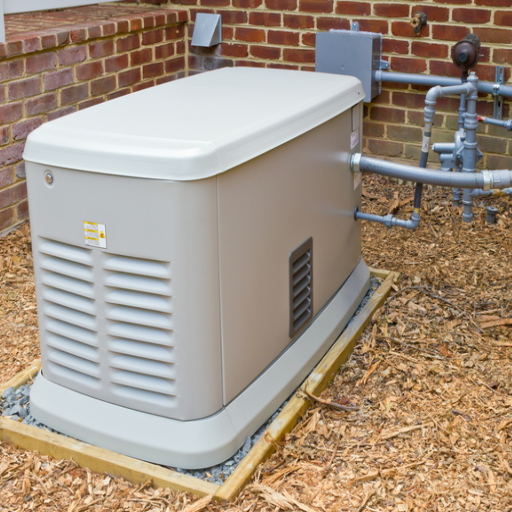
Interpreting the Results from Our Sizing Tool
When users provide total wattage requirements, fuel type, and application (residential, commercial, or industrial), the tool determines the most optimal generator size and power output needed to cater to each user’s distinct requirements. The algorithm works off variables like starting watts for motor-operated devices, continuous load requirements, and reserve capacity to protect against possible power fluctuations.
The displayed results, to guarantee accuracy, are closely aligned with the user’s detailed power consumption breakdowns, which includes all proprietary ma categories. To improve user experience, the tool also distinguishes between primary and secondary power needs, allowing better management and prioritization of power consumption.
Users are further assisted through the provision of data compiled from verified sources devoid of vague phrases, offering precise measures that users may need. With such straightforward guidance and detailed authoritative instruction, users can eliminate uncertainties and make precise adjustments to power solutions tailored to their individual needs.
When to Consult a Certified Electrician
An electrical system is complicated by nature and requires specialized knowledge of safety protocols, installation, and troubleshooting. A professional electrician must always be consulted for any major repairs, installations, or upgrades. These electricians are trained to follow safety regulations and local electrical codes. Things like adding a new circuit breaker panel or rewiring portions of your house require complying with local safety regulations, something only certified electricians know how to do safely. Doing these tasks without guidance poses some of the most dangerous risks, such as electrocution or electrical fires.
An example of another case where consultation should be obtained from a professional electrician includes cases of strange power surges or unexpected switch trips. These symptoms showcase possible issues that include overloaded circuitry, old wiring, or outdated electrics. Thorough assessment comes from certified electricians who can solve these issues accurately while providing reliable, long-lasting solutions. To ensure the safety of one’s home, a sudden power expansion or the introduction of electronic appliances should be planned with a professional from the beginning.
Last but not least, professional electricians are essential for guaranteeing adherence to building codes and safe operation during inspections. This not only protects the residents but also avoids possible lawsuits and financial costs due to faulty installations or code breaches. With the guidance of an appointed certified electrician, you will be assured that the electrical work will be done at the required thresholds to safeguard your investment and individual safety.
What Size Generator Will Power My Whole House?
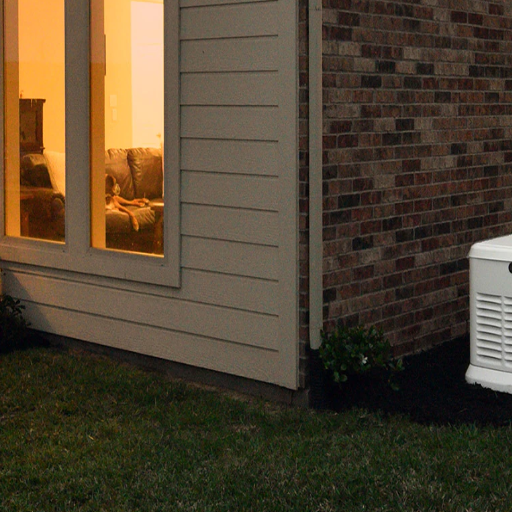
Essential Circuits vs. Complete Home Backup
While evaluating generator options, it is important to determine whether you need power for essential circuits only or full home backup capability. Some circuits include important functions like lights, refrigeration, heating, and even medical equipment. Only powering those circuits is much easier to do with a 5 to 10 KW generator, which is the goal for most homes. This is a very economical option since it helps save energy, reducing costs to the household.
On the other hand, a whole house backup is the opposite end of the spectrum. This solution needs to be able to supply power to every circuit in the house, including power-draining appliances like HVAC systems, water heaters, and stoves. All of these give unparalleled convenience but at the cost of power: this can go over 20 to 25 KW depending on the size and energy-demanding nature of the household. Such systems normally have an automatic transfer switch (ATS) for power outage situations so the changeover is seamless.
Picking one of the two configurations will depend on a budget, energy needs, and the home set-up. To figure out the quantity and type of circuits which need backup power, a comprehensive energy audit can be performed and an experienced technician can be consulted so that his/her choice of generator matches the demand to power in the present and future. For dependable performance, ensure that fuel economy, maintenance, and noise level are considered when making the choices.
Finding the Right Home Standby Generator for Power Outages
One of the considerations for a standby generator is its power configuration. It has to be calibrated at kilowatts (kW). For household areas, the value of power output usually varies from 7 Kw for a few emergency circuits to 22 Kw or more would be considered for an entire house. Furthermore, energy monitoring capabilities in the generator guarantee that vital devices such as HVAC systems, refrigerators, and medical appliances will be adequately powered during maximum utilization periods.
Considering the fuel type of the generator is also fundamental. Most modern standby generators operate on propane gas or natural gas as they combust cleaner and require lesser maintenance. In addition, powered gasoline standby models are costly on equipment utilized during outages. Moreover, existing propane cylinders are available, which lowers the chances of interruptions during lengthy outages. Additionally, more sophisticated models are now equipped with smart monitoring, which lets homeowners monitor their power usage and maintenance notifications on mobile apps, enhancing dependence and convenience.
In addition, installation features must be noted. Homeowners should hire a licensed professional to select the best location for generator placement while also considering local building regulations and noise limitations. The latest designs have features that reduce noise emission, and generators often produce between 50 to 70 dB, which is quiet enough not to disturb residents or neighbors. Considering tthe echnical details of the generator alongside contemporary advancements ensures a reliable and comfortable power supply even during unexpected outages.
References
Frequently Asked Questions (FAQs)
Q: How do I determine the right size standby generator for my home?
A: To determine the right size generator for your home, you should first calculate the total wattage of all electrical appliances you need to power during an outage. Start by listing essential items and their starting and running wattages. A home standby generator typically needs to cover your refrigerator, heating system, lights, and other critical appliances. For accurate sizing, consider both continuous load and surge requirements when appliances start up. Many manufacturers offer a generator calculator on their websites, or you can consult with a local dealer who can assess the specific details of your home and recommend the minimum generator capacity needed for your situation.
Q: What factors should I consider when selecting a whole-house generator?
A: When selecting a whole house generator, several factors need consideration: 1) Total electrical power requirements of your home; 2) Whether you want to power everything simultaneously or use load management; 3) Available fuel options (natural gas or propane); 4) Climate conditions in your area that may affect generator operation; 5) Local noise ordinances; 6) Available space for installation; 7) Budget constraints; and 8) Maintenance requirements. Understanding what size generator you need is crucial – an undersized unit won’t meet your backup power needs, while an oversized one wastes money and fuel. Working with an authorized dealer can help ensure you make the right choice based on the specific details of your home.
Q: How does a wattage calculator help in generator sizing?
A: A wattage calculator is an essential tool for determining the right size generator for your needs. It helps you add up the power requirements of all electrical appliances you plan to run during an outage. These calculators are typically intended for estimating purposes and guide you through selecting common household items while automatically accounting for starting wattage requirements, which can be 3-7 times higher than running wattage. Most generator manufacturers offer online calculators where you input the items in your home, and the tool calculates your power needs. Remember that the generator calculator results provide a good starting point, but consulting with a dealer for your exact power requirements is recommended for optimal sizing.
Q: Can a home standby generator power my entire house?
A: Yes, a properly sized home standby generator can power your entire house, but whether you need a true whole-house generator depends on your specific power requirements and budget. For most homeowners, a generator with load management capabilities offers the most cost-effective solution. Load management allows a smaller generator to run all appliances in your home by prioritizing and cycling power between devices rather than running everything simultaneously. This approach can significantly reduce the generator size needed. For example, instead of requiring a 24kW unit, you might only need a 14-16kW generator with load management, resulting in substantial cost savings while still providing comprehensive backup power.
Q: How do electrical load requirements affect generator sizing?
A: Electrical load requirements are the fundamental factor in determining the right size of generator. Every electrical circuit and appliance in your home has specific power needs measured in watts or kilowatts. Large appliances like air conditioners (AC), electric water heaters, and ranges require significant power, while smaller items like lights and electronics need less. The challenge in sizing comes from accounting for starting watts (surge requirements when motors first turn on) versus running watts. For example, an AC unit might need 3-4 times more power to start than to run continuously. A comprehensive electrical load calculation should include both types of wattage for all items you want to power during an outage to ensure your generator can handle the maximum potential load.
Q: How can I size a generator for my job site or commercial application?
A: Sizing a generator for a job site or commercial application requires a more detailed analysis than residential sizing. Start by creating a comprehensive list of all equipment that will run simultaneously, noting both starting and running wattage requirements. For construction job sites, consider power tools, compressors, heaters, lighting, and any specialized equipment. Commercial applications might include computers, servers, refrigeration, HVAC, and manufacturing equipment. Factor in growth plans and potential additional equipment. Due to the critical nature of commercial power needs and the potential financial impacts of power loss, it’s essential to work with an electrical contractor or generator specialist familiar with commercial applications. They can help determine the optimal generator size with appropriate safety margins for your specific operation.
Q: What’s the difference between standby generators and portable generators for home use?
A: Standby generators and portable generators differ significantly in installation, power output, fuel efficiency, and convenience. A home standby generator is permanently installed outside your home, connects directly to your electrical panel, runs on natural gas or propane, and starts automatically during power outages. They typically provide 8-20kW for homes (enough for most or all circuits) and operate quietly. In contrast, portable generators are manually operated, gasoline-powered units that must be placed outdoors and connected via extension cords or a manual transfer switch. They generally provide 3-8kW (enough for essential appliances only), are louder, require refueling every 6-12 hours, and must be manually started. Standby generators offer superior convenience and comprehensive backup power but at a higher initial investment.




